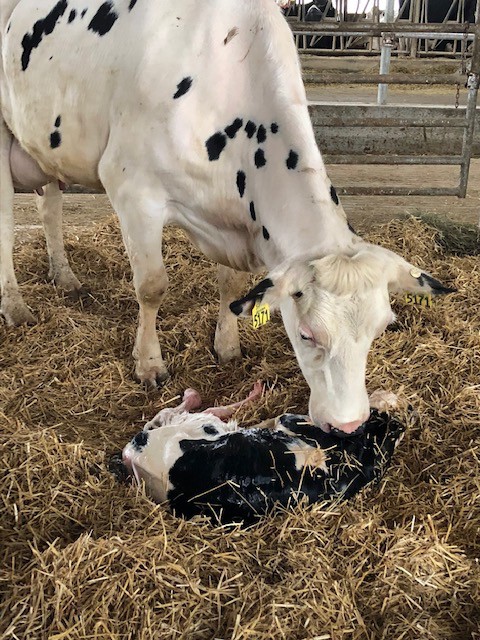
Newborn calves should be fed a minimum of 10 percent of their body weight of high-quality colostrum in the first 24 hours following birth. High quality colostrum means free from bacterial contamination and contains at least 50g/L immunoglobulins (IgG). For Holstein heifer calves (average 85-90 lbs. at birth), 10 percent of body weight equates to approximately four quarts (one gallon or 3.8 liters) of colostrum. The quicker calves are fed colostrum, and the more IgG they are fed, the better the transfer of immunity to the calf. Michigan State University Extension recommends feeding four quarts of high quality, clean colostrum within six hours of birth to achieve successful passive transfer. However, there are still a subset of calves that will not have successful passive transfer even if all these goals are met. For example, if the calf is stressed before birth, colostrum feeding is delayed or if quality or cleanliness are compromised, then that calf is at risk for failure of passive transfer even with four quarts of colostrum.
Because gut closure (the process of the gut wall closing down the ability to directly absorb IgG) begins almost immediately at birth and is complete by 24 hours, we typically focus on getting the first feeding into the calf as quick as possible. However, colostrum contains much more than just IgG. Colostrum is very high in fat and protein, and contains hormones that researchers now believe are very important to the calf. A second feeding of colostrum will provide the calf additional antibodies, but also the nutrition it needs. Michigan State University Extension recommends feeding a second meal of colostrum six to 12 hours after the first feeding, at a volume of two to three quarts. While the second feeding must be free of bacterial contamination, it is worth feeding even if there are less than 50 g/L IgG’s (under 22 on the BRIX scale). It is noteworthy that most calves will not be hungry six to 12 hours after a four-quart first colostrum feeding, so using an esophageal tube feeder will probably be warranted.
According to UDSA’s survey “Dairy Cattle Management Practices in the United States, 2014,” 74 percent of small (30-99 cows) and 58 percent of medium operations (100-499 cows) and 52 percent of large (500 + cows) operations fed two quarts or less of colostrum at first feeding. However, the majority of operations across herd sizes fed an additional two quarts or more resulting in almost 90 percent of operations (88 percent) feeding four quarts or more of colostrum during the first 24 hours of life. Our research at MSU, and research done at other universities, indicates that two quarts at first feeding is not enough. The farms with the best passive transfer results from 50 Michigan dairy farms in 2016 all fed a second feeding and a total colostrum of 5.5 – 6 quarts the first 24 hours. Indicating that most farm operations see the benefit of feeding a second feeding of colostrum.
While research has been limited in the area of second colostrum feeding, if there is enough colostrum on your farm to provide heifers an additional two to three quarts of first milking colostrum, calves could benefit from improved health and growth.
Source: canr.msu.edu











